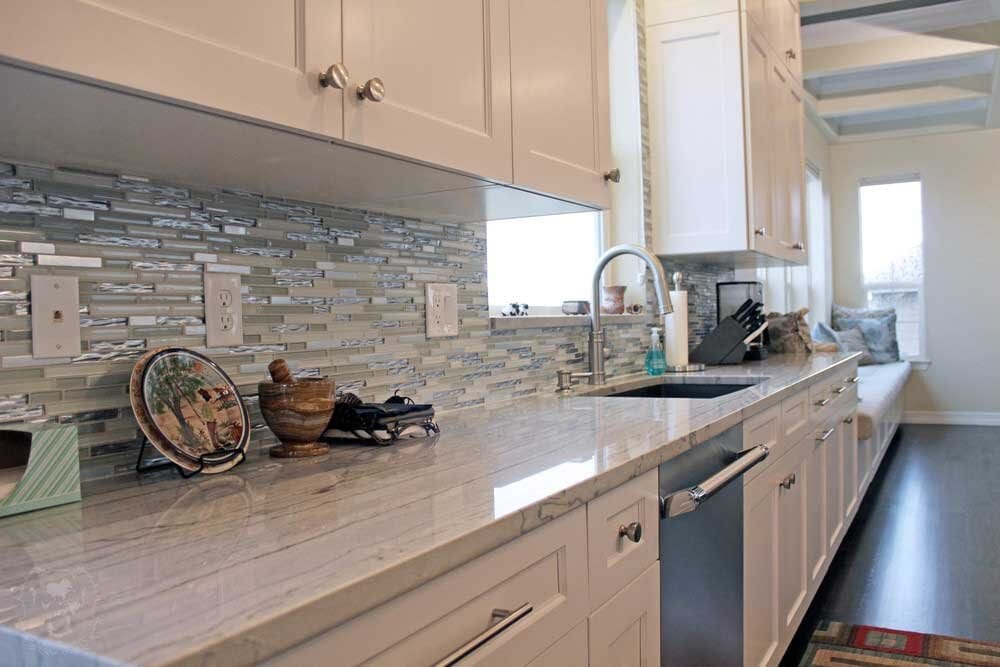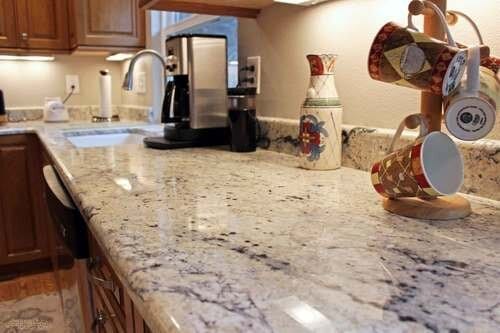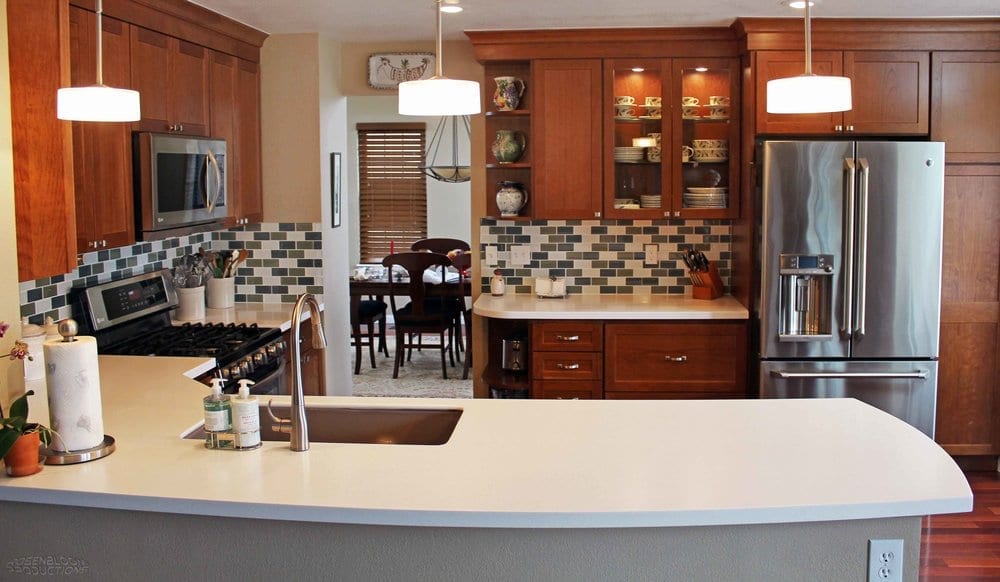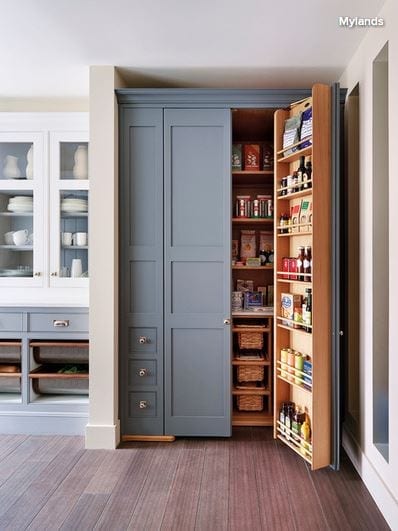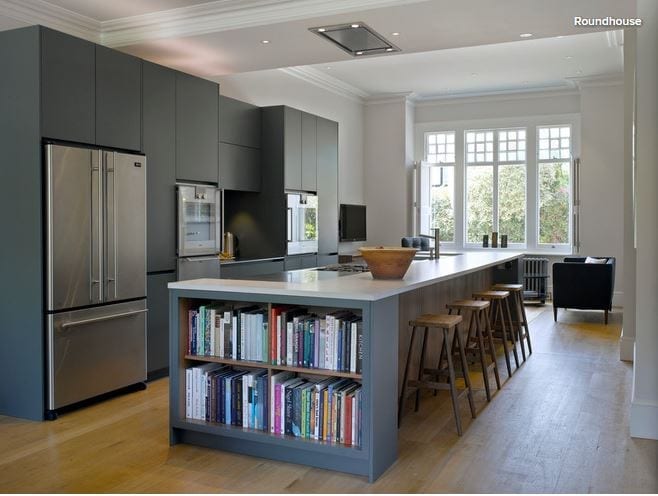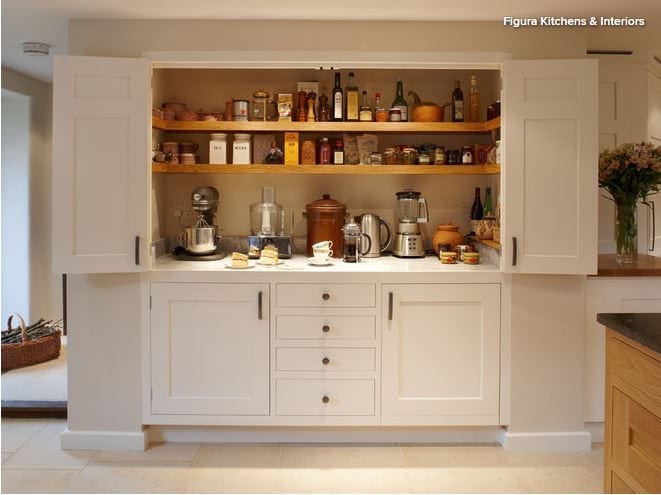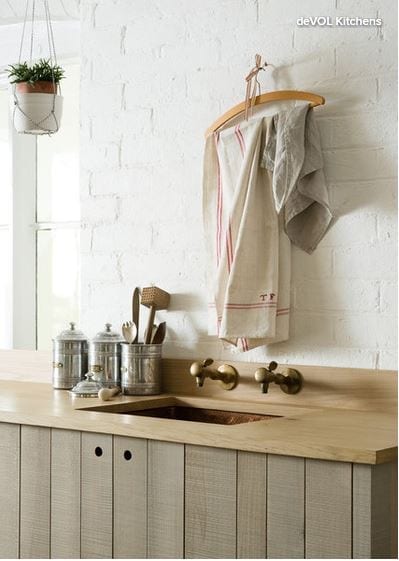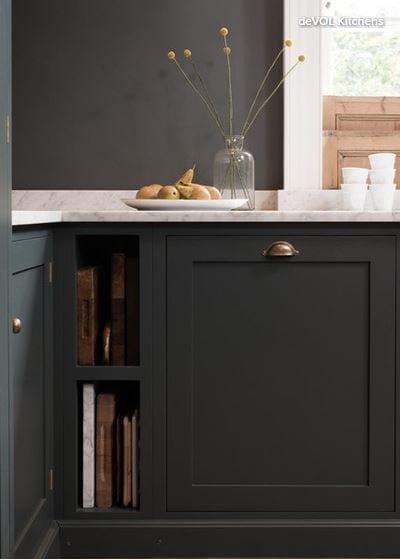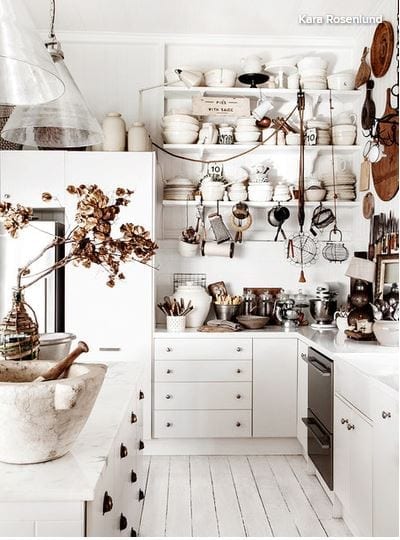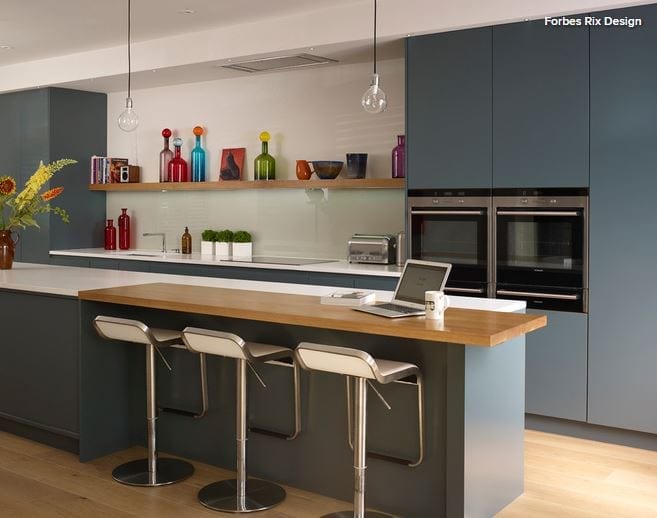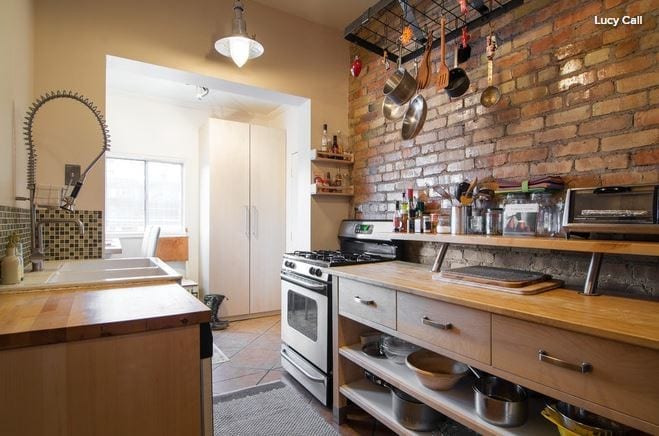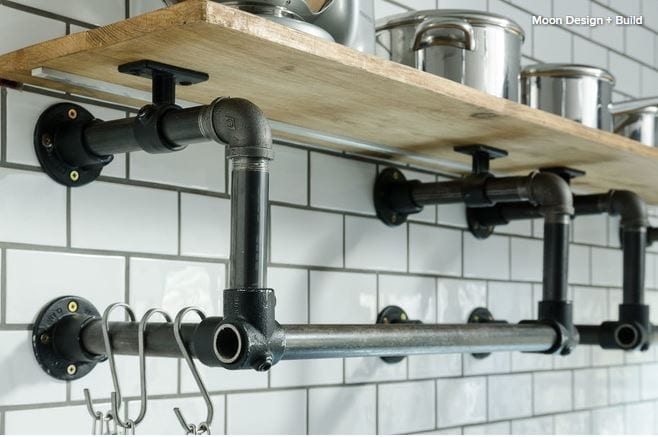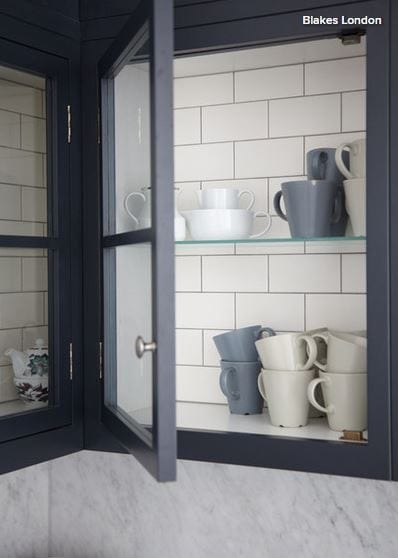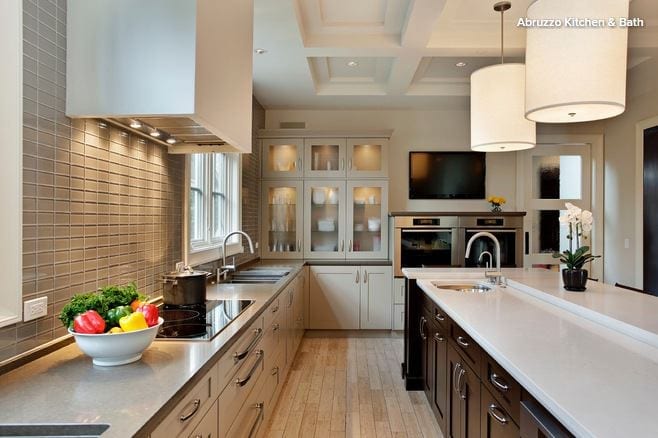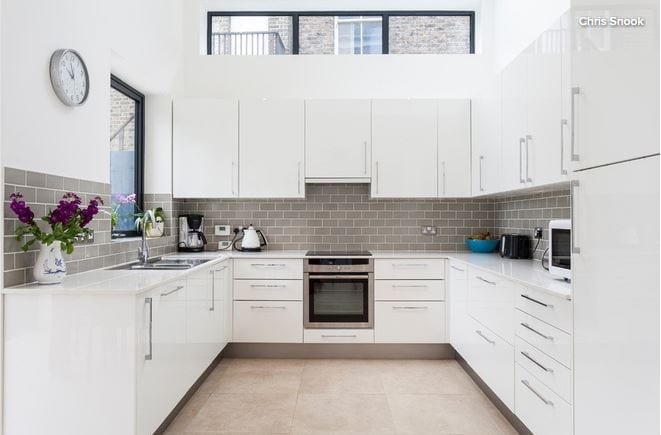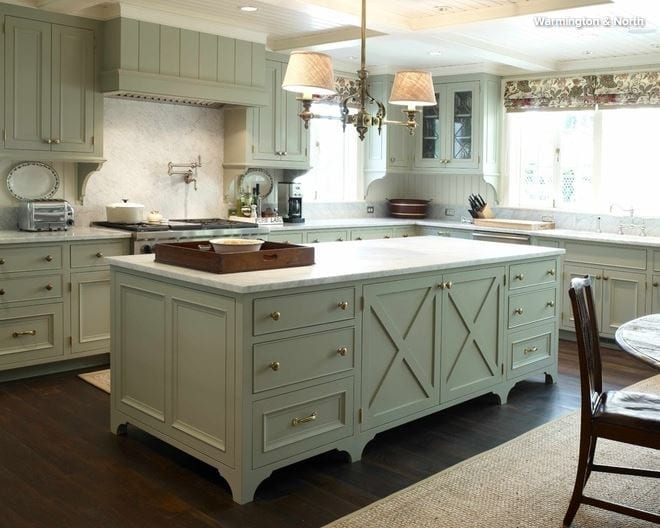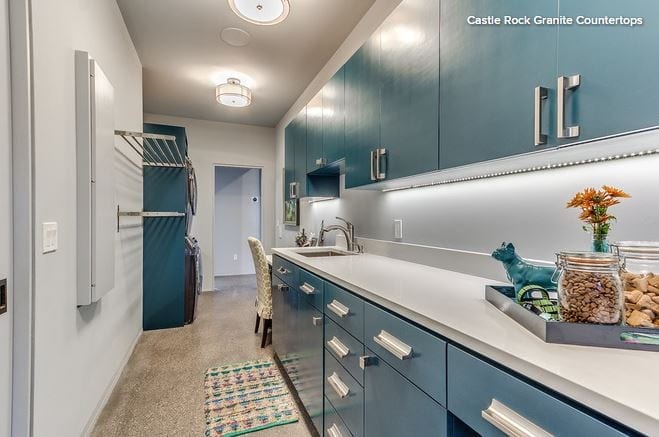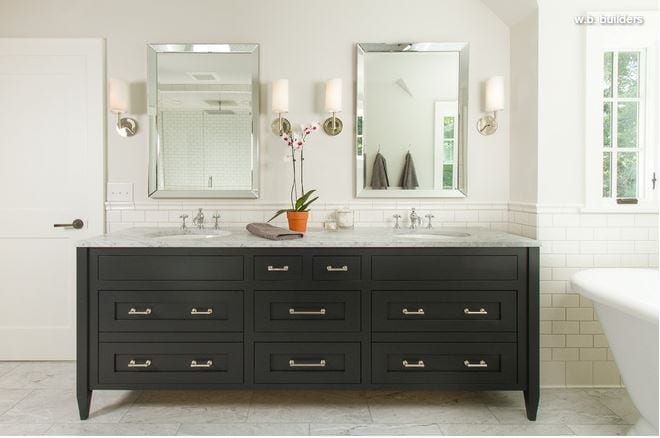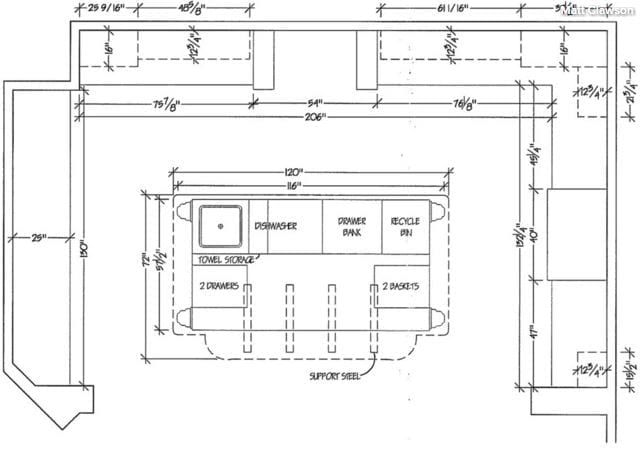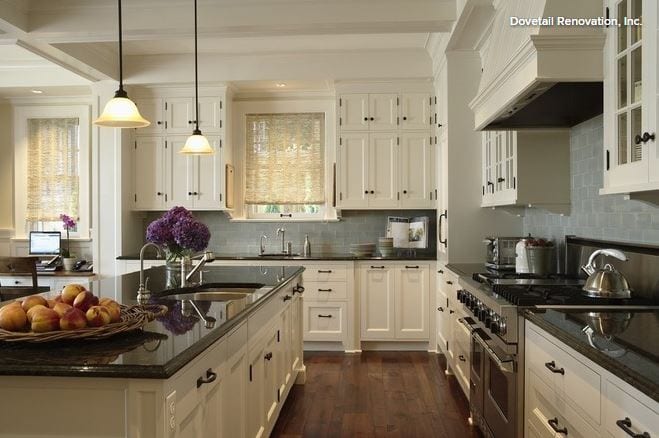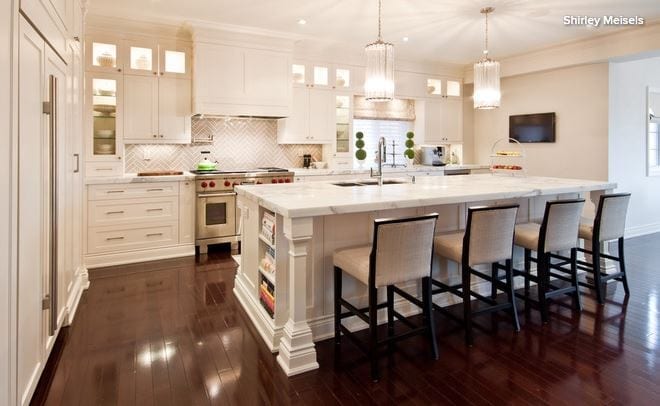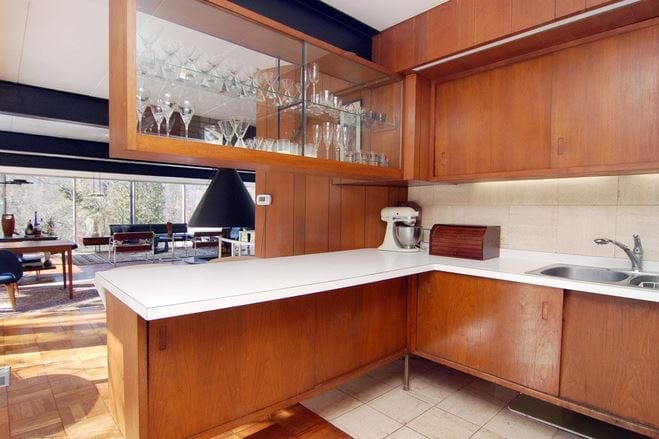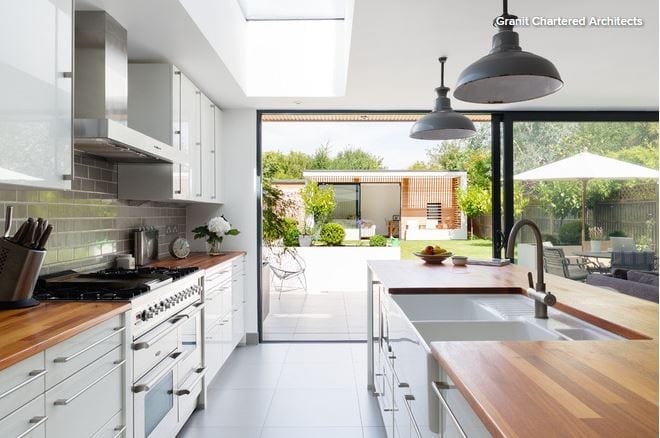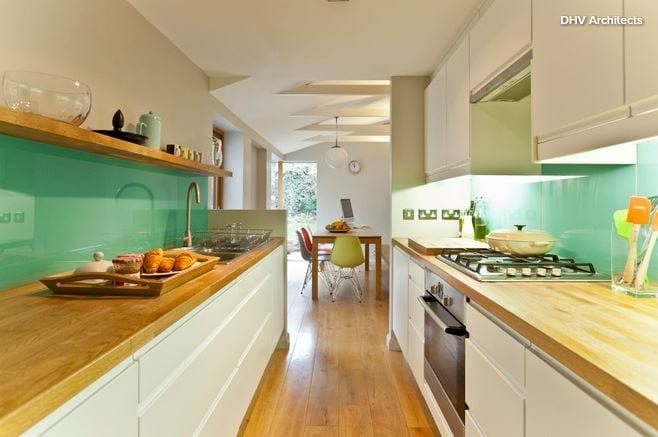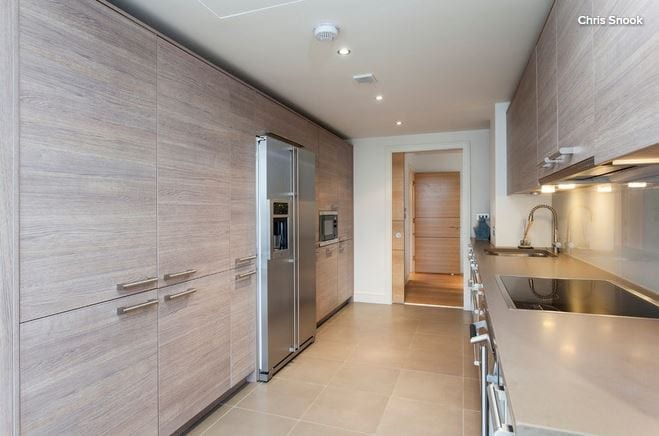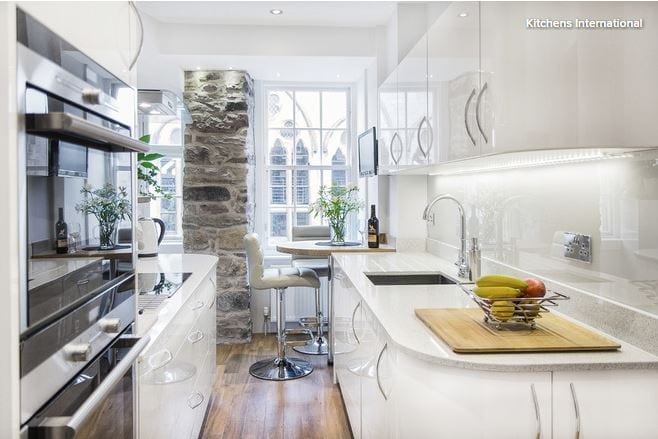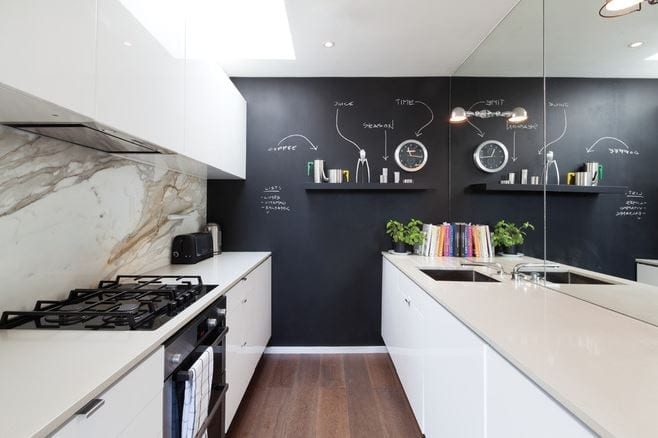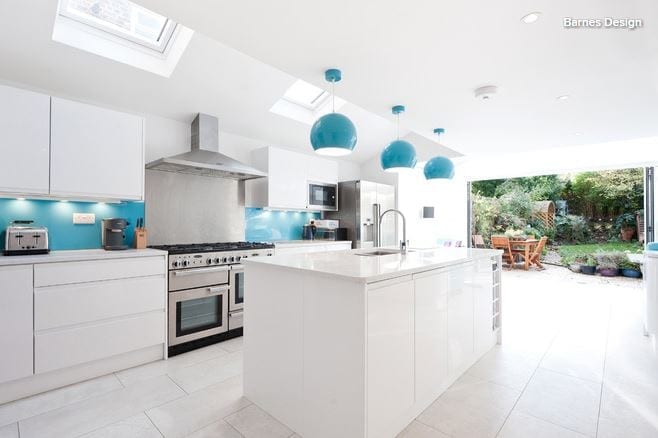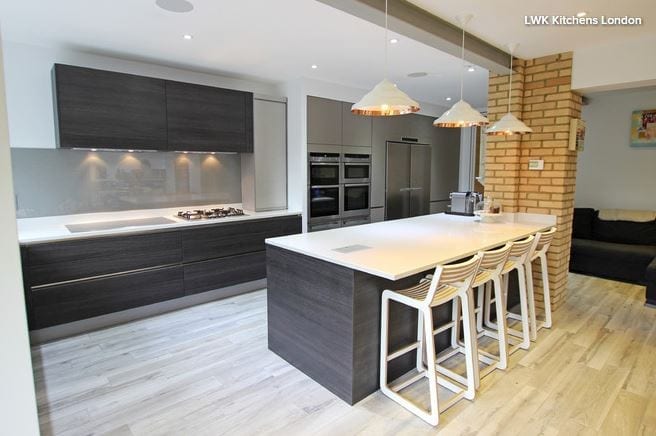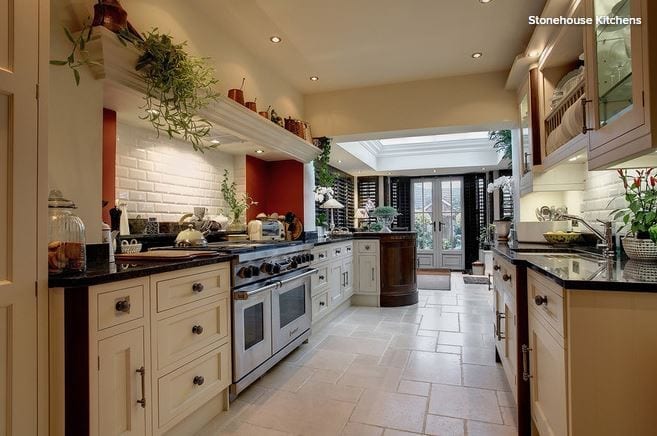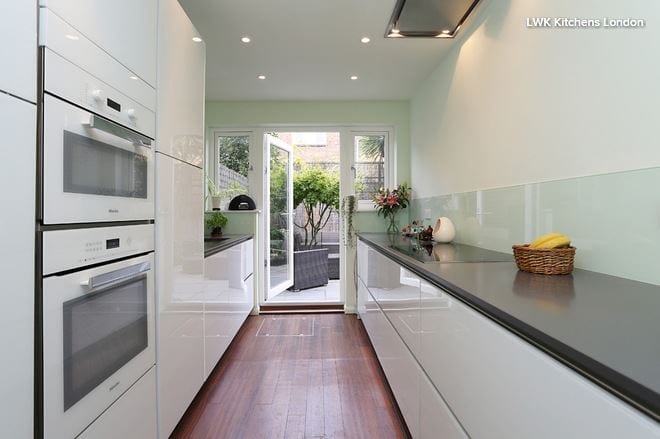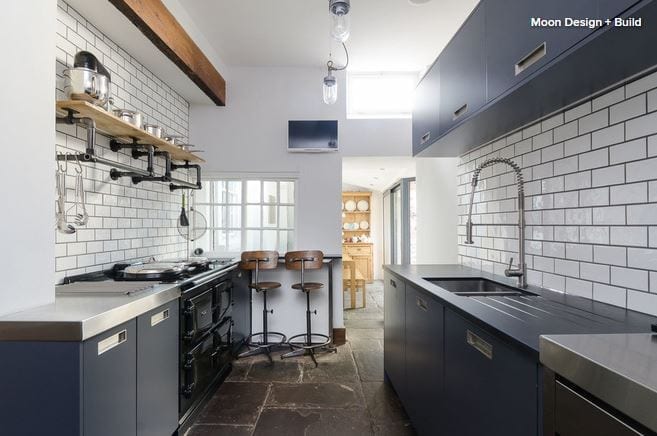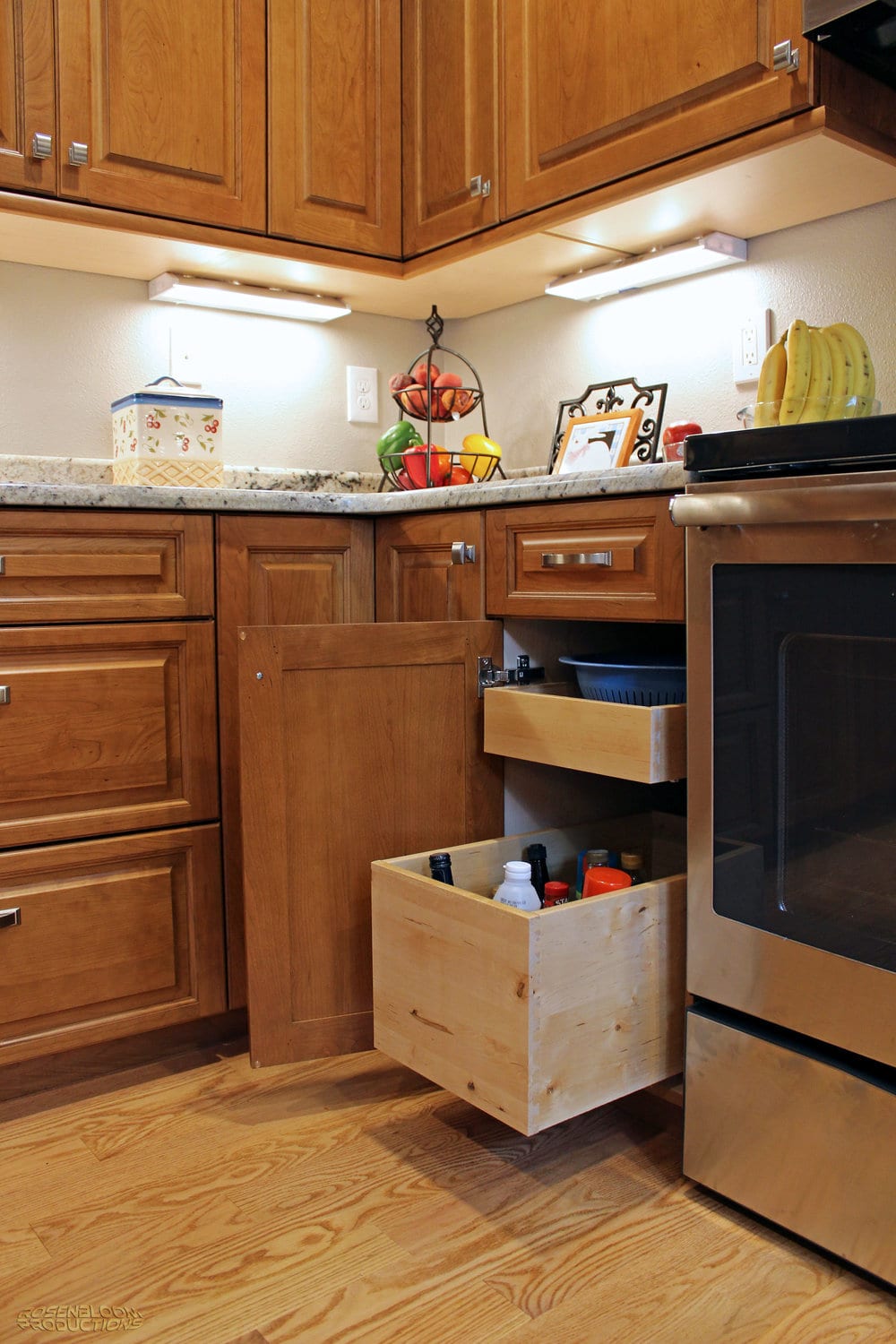
What passion drives your desires in the #kitchen? Big #countertops? Wide #pantrys? Or maybe something that slides…
What passion drives your desires in the #kitchen? Big #countertops? Wide #pantrys? Or maybe something that slides…
Matching your backsplash to your kitchen countertop is truly an art form. Come talk to the best designers in the industry at American Cabinet & Flooring, Inc. because seeing is believing!
When you want seamless design matched with unparalleled beauty in your kitchen designs there is only one place to go American Cabinet & Flooring, Inc.
Adding contrast is key to bringing out the individual elements of your kitchen #cabinets #countertops #flooring #design
Article by: Joanna Simmons
Kitchens are all about storage, but it can become rather predictable: Think rows of built-in cupboards and wall cabinets, with an emphasis on practicality over personality. So how can your cooking space ingeniously accommodate everything you need while also looking original and exciting? These 10 great solutions offer some fresh ideas — not to mention storage eye-candy!
Go full-size. Pantries are huge news in kitchen storage and for good reason. While a conventional base unit requires you to get down on your knees with a flashlight to find that last can of beans, anything stored in a tall pantry like this one is easily visible and accessible.
Typically fitted with drawers, racks, baskets and even lighting — and performing valiantly even when ultra-slender — these modern beauties offer plenty to love.
Create an island library. Passionate home chefs accumulate lots of cookbooks over the years, but not always the space to store them. Volumes kept near the stove can become scruffy and grease-spattered and perhaps don’t merit being displayed prominently.
How about this, though: neat shelves on the end of an island? The books are visible — and add color — without being central to the design of the kitchen, and they’re easy to grab when you’re searching for a recipe.
Scale up. A pantry that’s also a breakfast station is sure to set any storage fanatic’s pulse racing. This is perhaps the ultimate piece of kitchen furniture, one most of us can only dream about.
It combines oodles of storage with a dedicated space where you can prepare your coffee and toast. You can then stand and gaze at your neatly arranged shelves while you eat. Life doesn’t get much better than that, does it?
Repurpose a hanger. Dish towels go on a cupboard or oven door handle, right? Wrong. You can hang them on a hanger that is hanging on the wall! Original, quirky, inexpensive storage.
Carve out space for the unwieldy. Chopping boards and trays are sizable, often heavy pieces that benefit from a dedicated home like this compartment incorporated into a run of cabinets. It’s such a simple little storage detail, but so invaluable.
Ditch convention. This pale and unpretentious kitchen may not be to a neat freak’s taste, but there’s something to be admired in its anything-goes approach to storage.
Superficially cluttered though it may appear, I suspect its owner knows exactly where everything is and that all the essentials are within a quick grab from the stove.
Opt for a lovely long shelf. There’s a growing trend for long shelves that simply break up a run of units rather than provide workaday storage. They can become home to beautiful objects or the odd cookbook or plant, helping to personalize a built-in design and lighten its look.
Hang it high. Making use of vertical space is a smart move in a kitchen, where storage often has to be worked into a small footprint. This space features a metal rack that was probably never intended for a kitchen but works beautifully holding pans and utensils.
It’s attached high on the wall to reduce the risk of banging a head against a frying pan!
Resist the sleek. Kitchen design often tends toward the sleek and efficient, but it can also rock a more edgy, homemade look while still packing in tons of practical storage. So think laterally and use old piping and boards to make some shelving — you’ll get storage and original style at the same time.
Add a twist to the typical.Kitchen storage needs to be well-designed and abundant enough to hold everything from mugs to marmalade. But really great kitchen storage does it while adding a twist of unique style.
These glass-fronted cupboards are fairly basic, but the tiling on the interior adds detail and interest and contributes to the kitchen’s industrial feel.
Article by: Gillian Lazanik, Houzz
Whether you have a simple powder room or a master en suite, functionality should be at the heart of your bathroom remodel. Read on to learn tricks for gaining storage, improving lighting and drainage, and more to ensure that your renovated bathroom stands the test of time.
Article by: Becky Harris, Houzz
There are more decisions that go into planning a bathroom vanity than you might think. Since January is the month when the most people go in search of the right vanity, we decided to take a closer look at them. In this story we focus on three single-sink vanities designed for three different situations. We chose three fairly modest full bathrooms, ranging from 50 to 74 square feet, and looked at each vanity’s style and dimensions, sinks, faucets, color, materials, hardware, storage, countertops and lighting.
Article by: Matt Clawson
When selecting cabinets for your home, there are questions to ask your cabinet designer and questions to ask yourself. Today we take you through that process, helping you define and communicate your vision while sharing tips on working with design professionals.
In the first two installments of this series, we reviewed cabinet basics. We determined the purpose of your cabinet project and its scope, and provided an overview of your cabinet options. You should at least have a cursory grasp of these concepts before you proceed to the next step: choosing your cabinet designer and beginning work.
Once you have a basic understanding of the cabinet possibilities, you’re ready to firm up your cabinet vision. If stock, ready-to-install cabinets work for you, you may not need a cabinet designer, and you will probably save considerable time and money. But for most projects, and certainly all custom and semicustom cabinet installations, the cabinet design and construction processes should be thoroughly planned and examined.
Finding Inspiration
This goes beyond the scope of your project, and cuts more to the picture in your mind of how the installed cabinets should look and operate. You do not need to have all the answers, but you should at least conceptualize what your finished picture might look like. Be prepared for this vision to morph a bit as you get into the design phase, but take the time to form a picture in your mind.
Is style important to you? If so, find inspiration among the plenitude of cabinet ideas available on Houzz, or you can emulate something you saw at a friend’s home, on television or in a magazine. The point is, find a specific example that shows a cabinet style that attracts you.
Also, it’s important to decide the primary function. Is it display, storage or improved day-to-day efficiency and livability?
And if you have to prioritize one over the other, is your primary concern style, or is it simply maximizing cabinet function? You should weigh your priorities, though the hope is, with a good designer and proper preparation, you won’t have to totally settle on one element over the other.
Defining the Details
Now let’s take a look at that picture of your project. For the sake of our little exercise, say the photo above is the one you picked. The first question to answer is, why did you pick this one?
Make sure what you love about this room is in fact the cabinets themselves. These are some of the simplest cabinets you will ever see. There is no display space and there are no visible frills, like crown molding or paneled ends. The cabinets possess a nice high gloss and a stark white finish, and are Euro style (with no visible face frame). They have flat-panel doors and drawer panels, and oversized chrome hardware pulls. They are modern and spartan.
Do you like all of that? Perhaps what really attracted you to this space was its utilitarian, U-shaped layout, with a full backsplash of uniform beige subway tiles. Maybe you admire the lofty ceiling with a high-set, horizontal window. These parts of the picture relate, of course, only if you too can achieve those elements in your space. Try to look closely just at the cabinets themselves and determine why you like them and what, if any, element you might want to change.
We can also closely examine the more traditional kitchen cabinets seen here, providing another possible example of your vision.
These cabinets are certainly custom-built, constructed with inset construction and using some well-thought-out design techniques to make the space unique. For instance, the drawer banks have two types of drawers. Note the look of the two upper drawers in each base-drawer section — they are not paneled, while the lower drawer beneath them is paneled. This technique produces a freshly elegant effect.
There are also barn-style doors on the island, upper display cabinets flanking the sink and fully paneled cabinet ends. The paneled range hood mirrors the beadboard ceiling and backsplash treatment, and the green painted cabinet finish nicely contrasts the gray-white granite top.
If this look is the one that strikes your fancy, be sure to really investigate each of these features, and try to specifically determine why the cabinets themselves suit you. Do you like the way the corbel details below the upper cabinets precisely relate to the backsplash transition between slab and wood paneling? Do you like the dark floors and the white paneled ceiling? Do you appreciate the brass hardware and fixtures, which might be a resurgent finish choice? Every specific feature of the design that is your inspiration must be examined carefully, so you can properly communicate to your designer exactly what you like about just the cabinets themselves.
Picking Your Cabinet Designer
When it comes to designing cabinets, the usual suspects are architects, designers, builders, specialty cabinet designers and cabinetmakers. Any of these folks might be the right person to design your cabinets, but how do you know which one to choose?
Job title is not really the critical criteria here — expertise is. You need to find out from the person you are considering how many projects he or she has designed. You need to see examples of his or her work. You need to determine if those examples closely match the vision you have for your own project. You need to interview past clients about their satisfaction with both the working experience and the final product.
You should ask all potential designers to explain the process of working with them. Be sure they expect plenty of communication, and expect to give you the opportunity to review plans and make changes or comments.
When you’re reviewing past work, unique design ideas can show that a designer is willing to give your project the time it deserves. In the photo shown here, the display cabinetry with wine storage above is a nice example of a small cabinet that maximizes its potential.
When you share your vision with a prospective designer, how receptive does he or she seem? Do you feel like the designer strikes the right balance between giving advice and listening to your ideas?
Listen. Once you have selected your designer and shared your vision, it is time to listen hard to his or her ideas. All of that experience is worth something, and it’s possible that some of your ideas are flawed in some manner. That’s where a designer can help.
Ask for your designer’s advice, given what he or she knows about your vision and your needs. A good designer will have a method, and you need to be willing to let him or her take the lead, and to listen to this pro on the path to creation. Given your basic understanding of cabinets after reading this series, you will have a head start understanding the decision-making process, and in conceptualizing all the options your designer is sure to present.
Take Your Time Reviewing the Design
A common mistake customers make is not taking the necessary time to thoroughly review the design before signing an approval. In most cases, your cabinet designer will take a week or more to complete the first design draft after meeting with you. Once you’ve received a set of drawings for sign-off, you should spend time studying each cabinet section. At the very least, the design will include a floor plan (layout), as shown here, and elevations (the cabinet view from straight on). Some designers will also provide a 3-D rendering, which can help you visualize the way the cabinets relate to your space.
If possible, you should walk the room with a tape measure and try to visualize each section. You should make sure nothing is left off that you might have discussed, and you should try to get a feel for how the cabinets will affect your space functionally and aesthetically. Don’t just assume your designer got it right. Your satisfaction matters most, and it is you who must take the time to confirm that the design really is all you want it to be.
Communicate Concerns
You may come up with some concerns, and some of those concerns are likely to be well-founded while others are not. If your designer deviated from some of your expectations, find out why. There may be good reason, or it may be an oversight. Take the time to explain anything that seems amiss to you, and give your designer a chance to explain his or her thoughts before you get worked up.
After the first draft, there are supposed to be changes. A good designer will expect this and be prepared to offer insight while listening to your thoughts.
If, heaven forbid, you find yourself working with a designer who resists changes or does not seem to really hear you, then you may need to get another party involved in the discussion. Sometimes it can be a good idea to involve the builder or architect more actively to smooth out the process.
Compromise
I don’t mean this as a bad thing, but almost all designs are a compromise among competing elements, such as cost, a spouse with different opinions than yours (who knew?) or the style-versus-function dilemma. There almost certainly needs to be some sort of compromise in your plan, and if you have a clear understanding of your priorities, you can properly weigh the few hard choices that are sure to arise.
Get 2 Recommendations and 2 Bids From Cabinetmakers
When working with a cabinetmaker, my advice is to trust your designer and builder. Good builders and designers, who have completed hundreds of jobs for satisfied clients, want to satisfy you too. They know good cabinetmakers, and they have probably developed a good working rapport with more than one. I recommend getting two recommendations, and then two bids for the cabinet construction once the designs are completed.
Your job is to pick the bid that’s best for you. Consider price as well as the advice of your designer and builder. Ultimately it’s a gut decision, but as long as both bids come from reputable cabinetmakers your builder knows and trusts, you have done all you can to ensure a quality finished project.
Patience
Custom cabinets can take two months or more to construct, plus a week or more to install. Once you have made all your design and finish choices, you will have to wait. The installation process can be an exciting time, when you actually see the tangible shapes you painstakingly pored over fill your room.
Don’t panic during this period. It seems like a long time, and worries can fester, but if you took the time to study this and the other cabinet stories in this series, and found an experienced designer and cabinetmaker to work with, you have done all you can.
Article by: Mitchell Parker
Storage is on everyone’s mind when creating a kitchen. But when smartly planned, storage can do a lot more than store your dishes, cookware and food. A multipurpose storage wall can free up room for an airier design that allows for a large island with plenty of work and eating space. These three kitchens show how it’s done.
Article by: Graeme Wilson
A galley kitchen consists of two parallel runs of units forming a central corridor in which to work. The galley layout works well for all kitchen styles; it’s also the preferred design of many professional chefs, who love it because it enhances safety and efficiency during cooking. Just like the compact galley on ships, for which the layout is named, galley designs optimize space by packing in an abundance of storage and work area, making them ideal for small kitchens. If you’re considering a galley layout or revamping one you have, here’s what you need to know.
1. Assess your space. Though galley kitchens work best in small spaces, they can also be good for medium-sized kitchens, such as the one pictured here. However, be aware that if the opposing runs are too far apart, the kitchen will lose its efficiency. (This kitchen gets it right.)
Also know that a galley layout, while ideal on a professional level, is usually an enclosed space without a dining area. That means that if there’s no possibility of opening up the space, it’s potentially not the most sociable of arrangements. On the other hand, a galley layout in an open-plan space can offer the best of both worlds. (Read on for details about galley kitchens with islands.)
2. Choose your galley look: Symmetrical … When it comes to galley kitchens, there are two layout preferences. The first is relatively symmetrical, as seen here. This usually means the length of the runs and the arrangement of units on each side mirror each other as much as possible — or as much as you want.… or asymmetrical. You can opt for an asymmetrical layout instead, using various approaches. One involves focusing tall cabinets or a bank of appliances on one side of the room, with base and wall units on the other (as seen in the next image). Or you can go with a mix of tall and wall units along one side, with a single run of base units on the other if, for example, you have an open-plan space, as pictured here.
3. Put tall cabinets on one wall. If you’re designing a galley kitchen as described above, it’s preferable to go for a wall length of at least 12 feet so the sink and cooktop can be placed far enough away from each other. For safety, these should be at least a foot apart, but since that wouldn’t leave any work space, we always try to site them more than 3 feet apart. In this arrangement, a run of 12 feet allows for sufficient sink capacity, with cabinets or drawers beneath the range — occasionally adaptation is required for top drawers in this scenario — and it ensures that all the major appliances fit.
Finally, 12 feet allows space for the units on the opposite run — the fridge, oven housing and pantry storage, for example. This arrangement provides ample storage space, helping keep the kitchen tidy and the countertops free of clutter.
4. Or break up the run. You might prefer an asymmetrical layout with tall and base units along the same wall. For example, if a wall is just over 12 feet long, it’s likely to have three tall housings at one end and three base units at the other. Typically, there would be wall units, floating shelving or a window above the base units. Along the opposite side you could have wall units, shelving, a window or even a clear wall.
This arrangement works really well if the kitchen is quite narrow, since without a tall bank of units as you enter the kitchen, the space will feel more open.
5. Work with a galley corridor.Depending on the layout of your home, galley kitchens may or may not be closed off at one end. If the far end leads to another room or the garden, it will see heavy traffic because it will become a thoroughfare.
Depending on the number of people in your household, this may not be a problem, but if you have small children or pets, you won’t want them charging through the kitchen while you’re holding a sharp knife or a pan of boiling water.
You can enhance the safety of your layout — particularly where the corridor is very narrow — by planning your kitchen with the sink and cooktop on the same run. Though less efficient than having those features opposite each other, this arrangement focuses your appliances in one area, so you won’t have to turn to the opposing run with potentially dangerous items in your hands.
6. Enhance a closed-off kitchen wall. A galley kitchen closed off at one end can be a safer layout, because there’s only one entrance, giving the cook greater awareness of others coming and going. But how to make good use of this wall space? It might be there’s a window here, in which case it’s important not to block your kitchen’s natural light. Adding a stool would let you sit at the far end to write out shopping lists or chat on the phone.
Alternatively, there might be room for some open shelving, a nice painting or perhaps a family-friendly chalkboard wall, as seen here, which can be used for playful drawings and notes or for shopping or to-do lists.
The clever use of the mirror in this compact kitchen is also worth noting; it creates the impression of a bigger space.
7. Create a galley with an island. I’ve mentioned that enclosed galley kitchens may not be the most sociable setting for the cook. A popular adaptation, when space allows, is the inclusion of an island.
In this kitchen, the island replaces one of the runs to become part of the kitchen layout and functionality. It sits parallel to the longer run of units and typically houses either the range or the sink. Whichever of those is not positioned in the island would be staggered on the opposing run rather than directly opposite. This staggering is safer and more efficient during cooking, because it reduces the amount of turning required between the sink and stove.
8. Make your galley sociable. Some homeowners want to add an island to a galley layout yet intend to keep the additional work surface clear. This is often the case with bakers, who like to use the space for rolling out pastry.
This was part of the goal for the kitchen seen here, which was designed for a professional recipe developer who worked from home. Her kitchen also had to accommodate the needs of her husband and two young children, and the seating on the far side of the island helps with this, keeping the kids safely clear of the cooking area but ensuring a more sociable arrangement than a standard galley would have.
9. Add seating. Sometimes there’s space for a small peninsula or breakfast bar in a galley kitchen, providing additional storage as well as dining space. Here, the peninsula at the far end of the kitchen is fully clear of the cooking zone and has seating on the far side. (It also doubles as a butcher block.)
If there’s space to add a table between the opposing runs of your galley kitchen, this can sometimes work. However, you need to be careful when planning the space, because if it pushes your work surfaces too far apart, they’ll be much less efficient.
Adding a small cart as an extra work surface might be an effective alternative, although in most cases there’s sufficient counter space in a galley to eliminate the need for this — unless it’s a specialized addition such as a butcher block.
10. Enhance a sense of space. When considering a galley layout, homeowners are keen to avoid a “corridor” effect, in which the kitchen feels small and enclosed. But even in small spaces, there are ways to avoid this.
As already mentioned, losing the continuity of tall units in favor of wall units or shelving will help open up the space. The choice of furniture also helps: High-gloss finishes in pale colors are best for reflecting light and enhancing a sense of space. Similarly, doors and drawers without handles give a clean look and take up less physical space than handled ones.
Finally, lighting is key. Well-placed and oversized lighting will soften the kitchen’s look and create the impression of more space.
